There are several woodpecker species present across North America. Whereas the species of the woodpecker genus share certain traits, each individual is distinct!
They differ in size from little to enormous and from simple to multicolored. Some people dwell in forests, whereas others dwell in deserts.
Woodpeckers are recognized for their formidable beaks, bright colors, lengthy tongues, and exceptional mounting abilities.
There are about 200 varieties of woodpeckers throughout the globe, with few species found in North America. This article will focus on those woodpecker species.
| Image | Name |
|---|---|
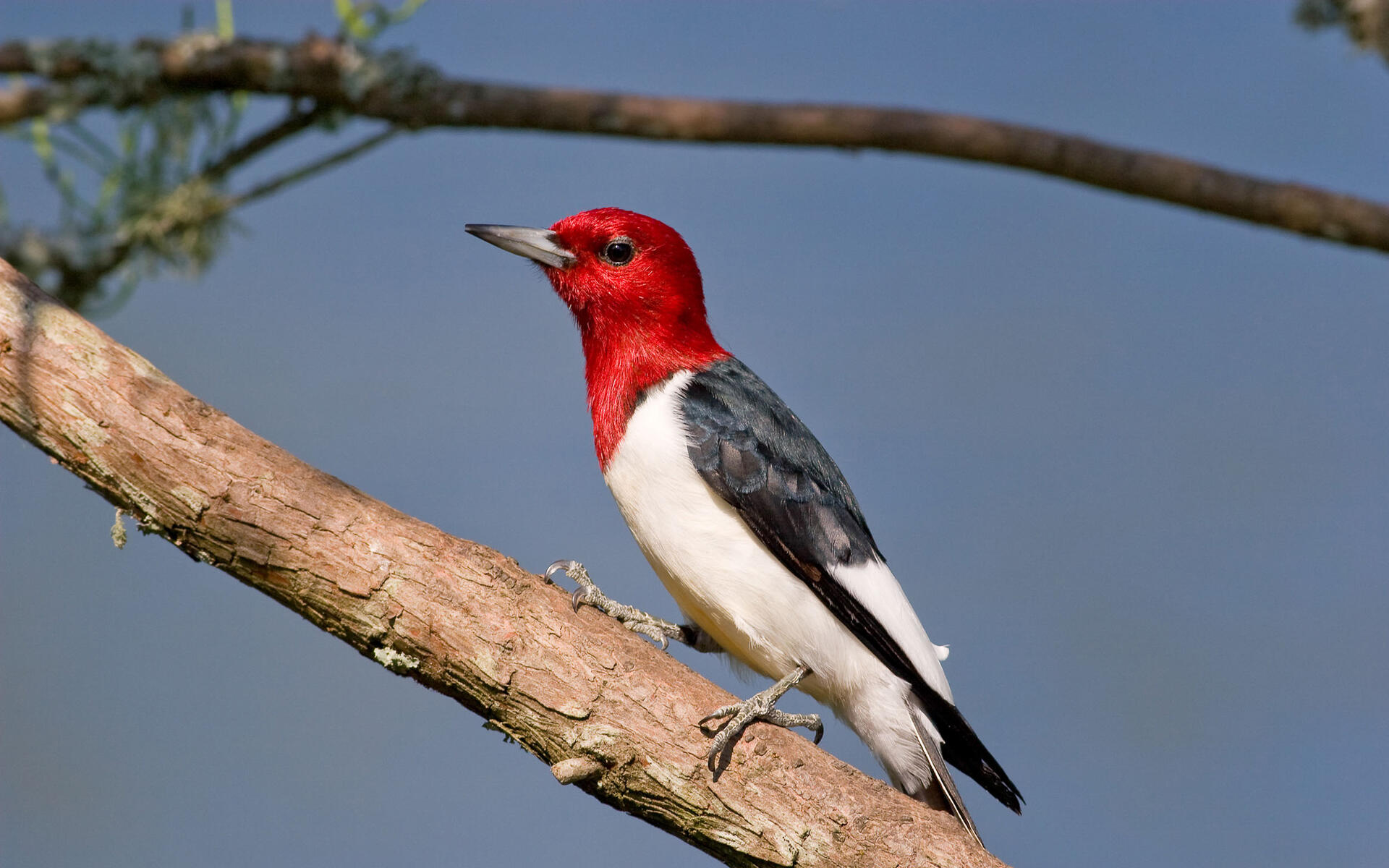 | Red-Headed Woodpecker |
 | Pileated Woodpecker |
 | Red-Bellied Woodpecker |
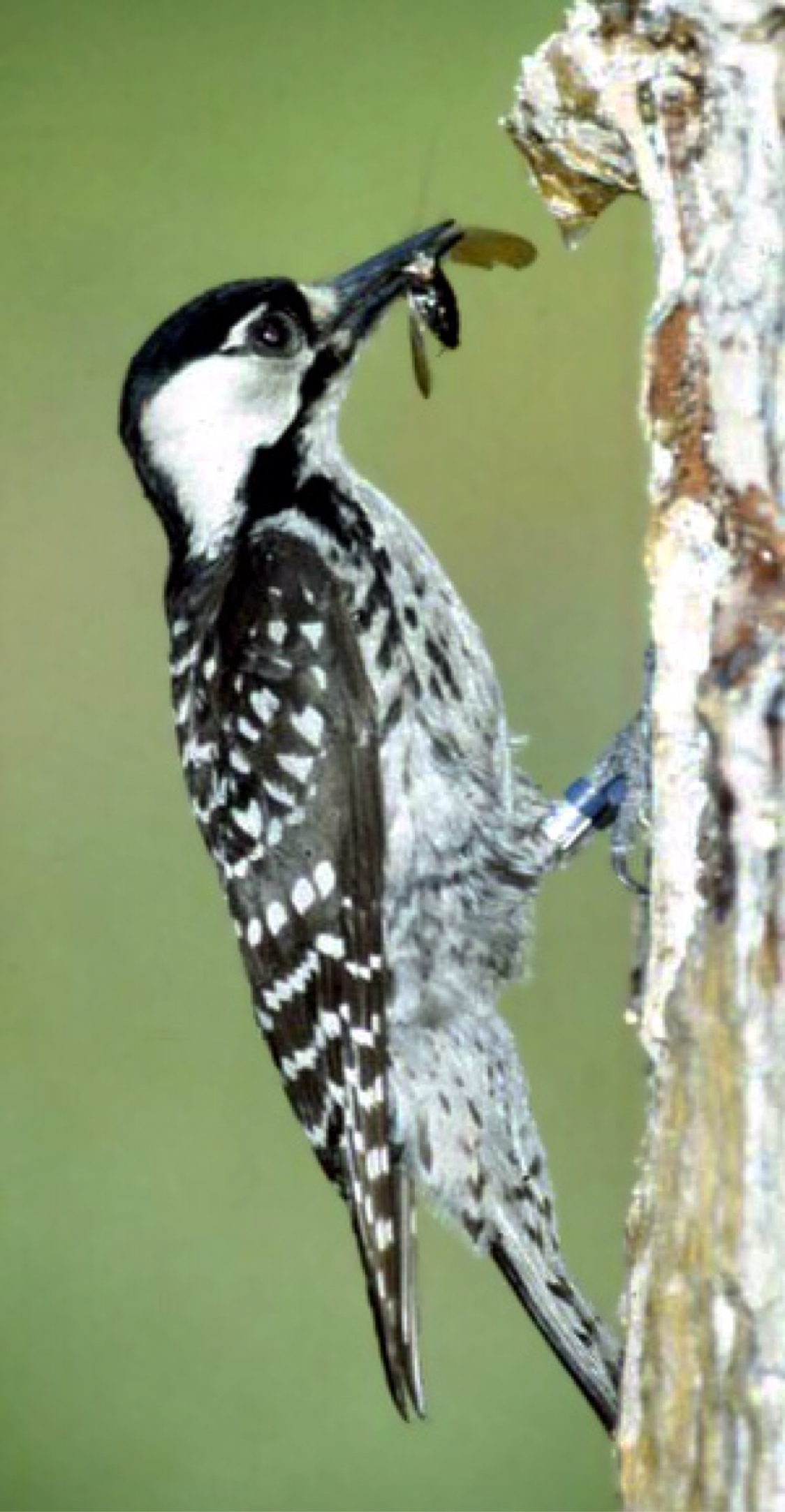 | Red-Cockaded Woodpecker |
 | Flickers |
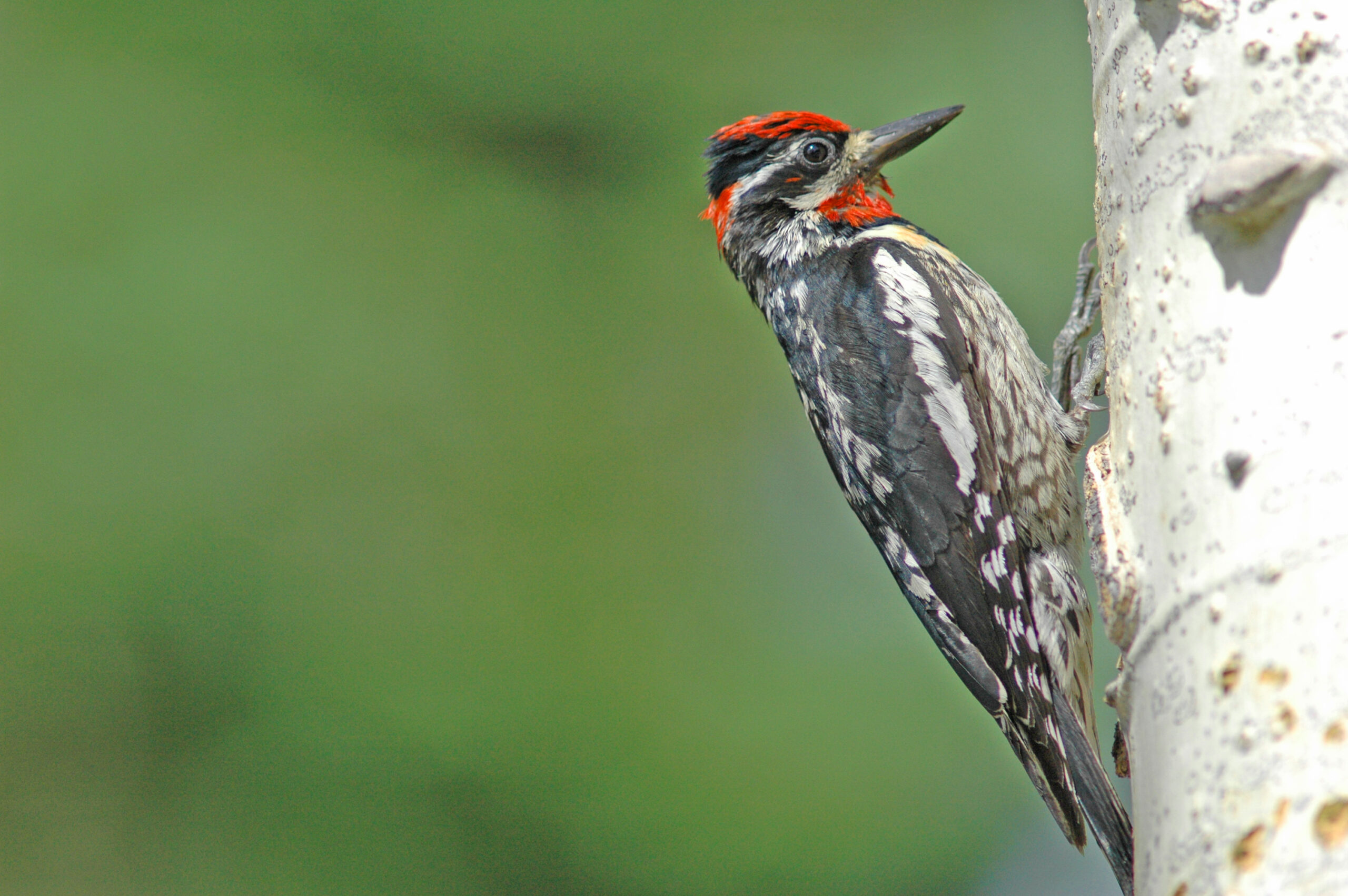 | Sapsuckers |
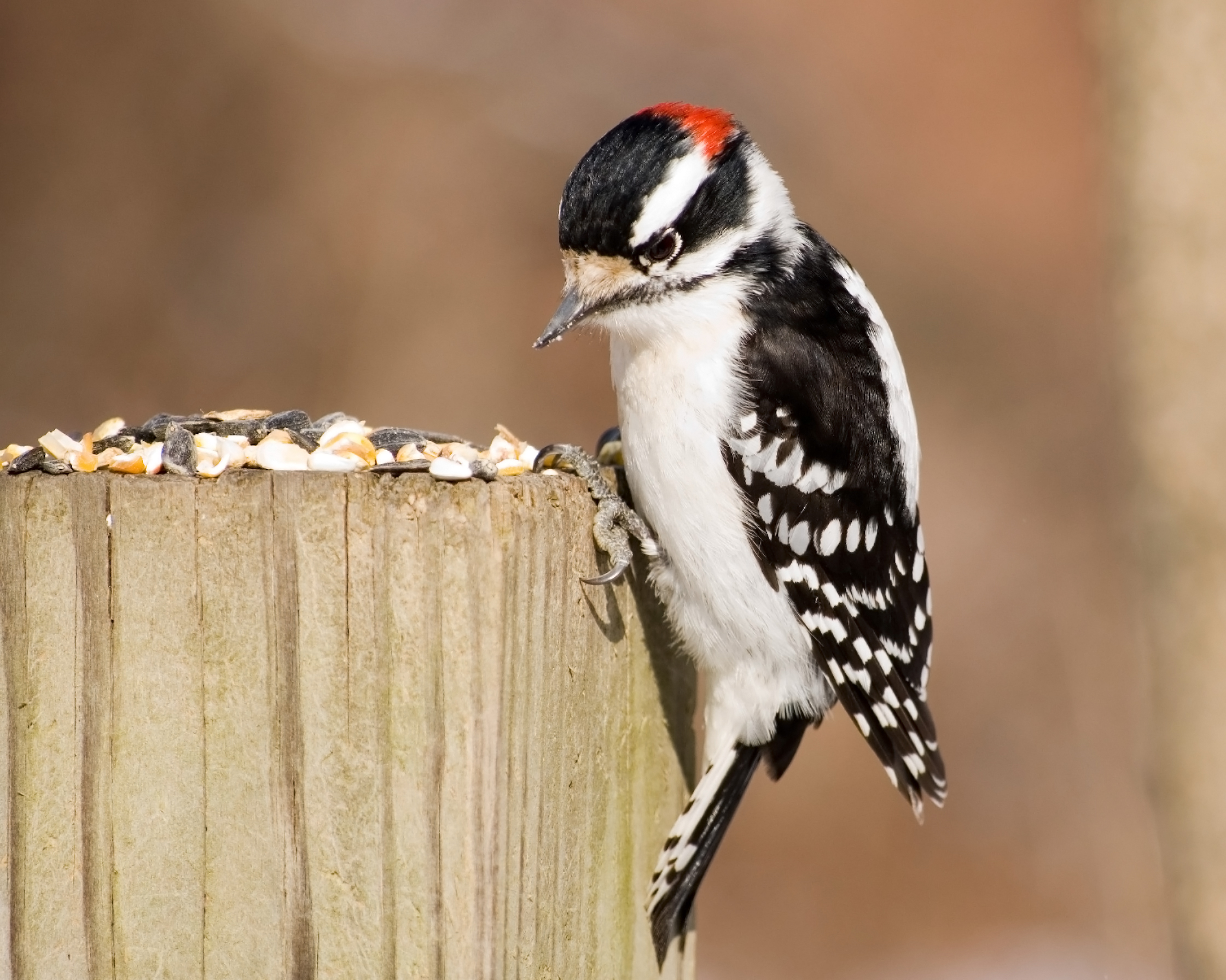 | Downy Woodpecker |
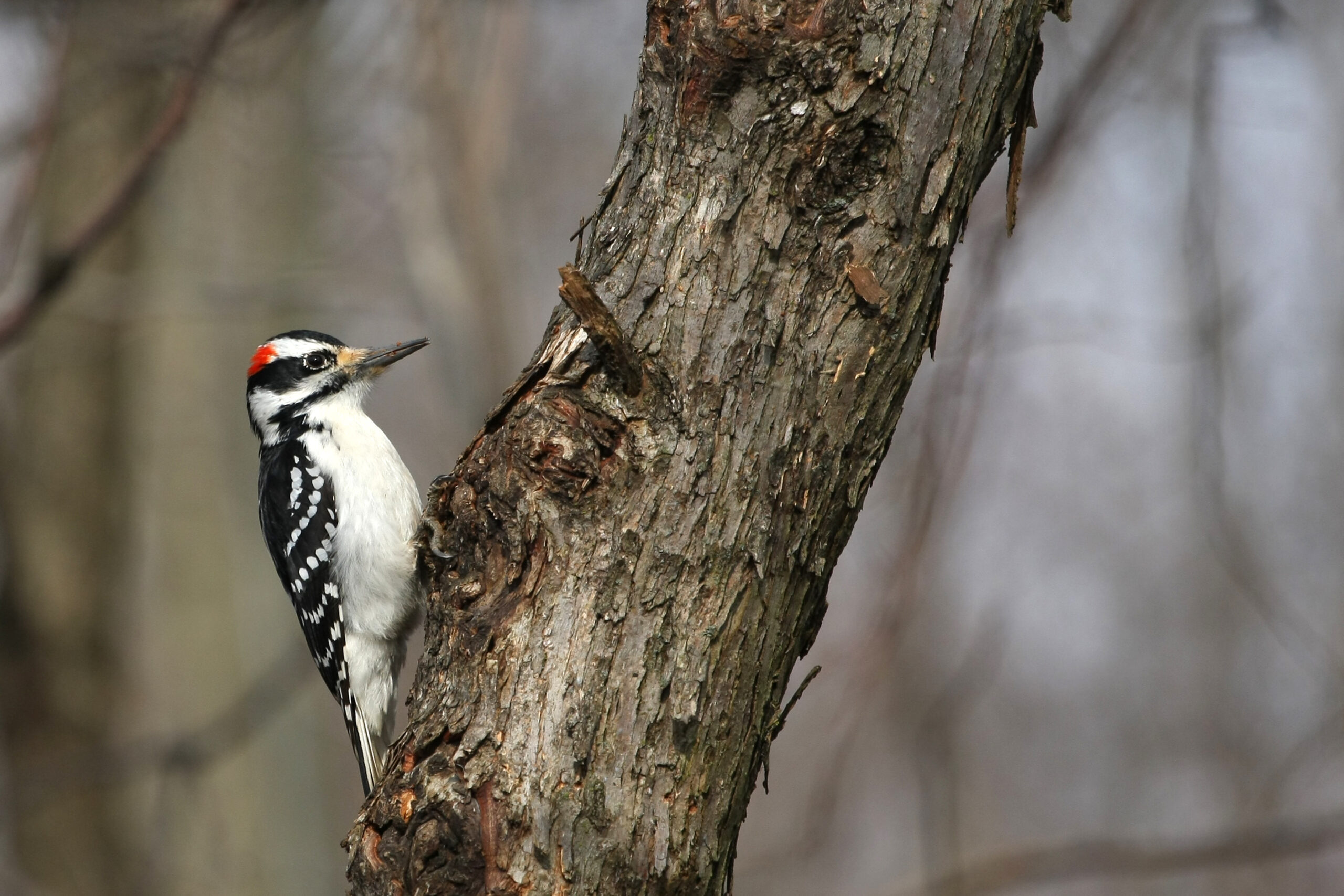 | Hairy Woodpecker |
Different Species of Woodpeckers in North America
We’ll explore with photographs, species descriptions, how to recognize them, as well as some important details about each of the North American woodpeckers listed here.
1. Red-Headed Woodpecker
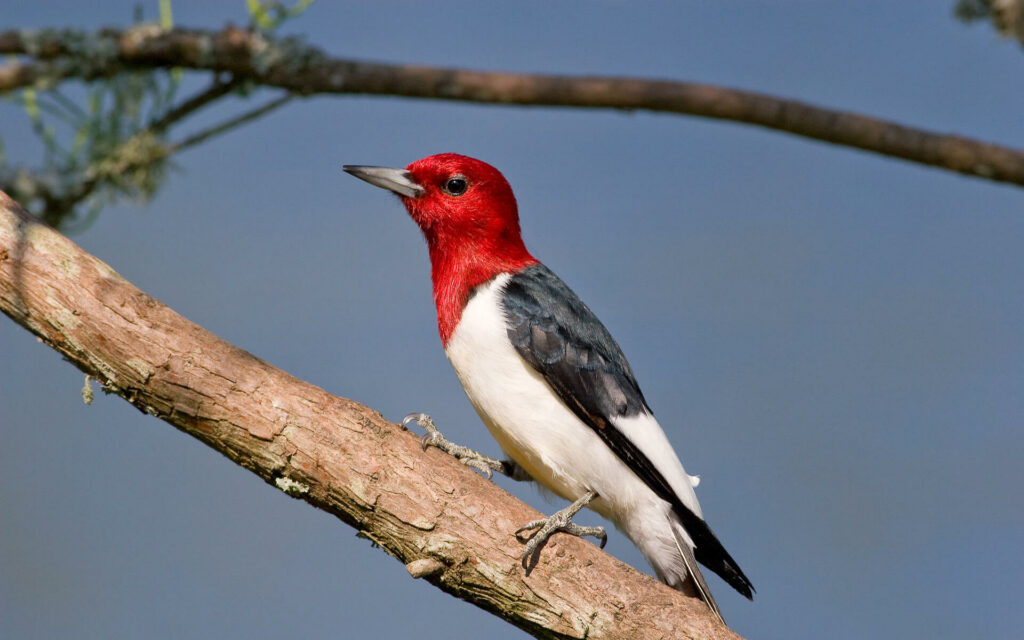
Size: about 7 to 9 in
Identifying markings: Adults feature a brilliant crimson forehead, a black body, a big white wing patch, and a white abdomen. Most woodpeckers have a little more detailed markings than these vast swaths of plain color.
Diet: Wood-boring insects and nuts that they are believed to stockpile in the autumn comprise their diet. Unlike most other woodpeckers, they spend some time perching and flying out to collect insects in the air.
They’ve even been discovered collecting bugs such as grasshoppers in wood gaps and are under roofing materials!
Habitat: Large forests, pine forests, standing timber in beaver swamps, river bottoms, orchards, and marshes are all possible habitats.
Location: In the eastern portion of the United States, however, it is considerably less frequent across New England.
Nesting: About 4 to 7 eggs are laid inside holes of tree stumps or limbs.
Facts About Red-Headed Woodpecker
They are frequently violent to other woodpeckers or species near their nests. These woodpeckers seem extremely aggressive, attacking other birds and sometimes stealing eggs from neighboring nests.
Unfortunately, they are declining in several locations, particularly in the Northeastern United States.
They endure the very same struggle for nesting cavities as other birds. However, this species constructs its nests entirely in tree stumps, an environment that is rapidly dwindling.
Dying or dead trees are frequently destroyed from the property for firewood, to lessen fire hazards, to deter specific blight insects, or just for aesthetic reasons.
2. Pileated Woodpecker

Size: About 16 to 19 inches long (North American largest woodpecker)
Identifying markings: Identifying features include a white and black striped forehead, a white band along the throat, and white wing linings. Males sport a crimson “mustache.”
Diet: Ants, as well as other wood-boring insects, as well as certain berries, form its diet.
Habitat: Mature woods with huge trees serve as a habitat.
Location: The eastern part of the United States, almost all of Canada, and the northern portion of the West Coast.
Nesting: About 3 to 8 eggs are deposited in holes dug from dead trunks or branches of living trees during nesting. Wood pellets line the hole.
Facts about Pileated Woodpeckers
These massive woodpeckers might dig holes seven or eight inches broad. If you’ve seen one of these in action on a tree, this is quite a spectacle, with a shower of wood pellets coming over like a stump cutter.
They can accidentally shatter tiny trees in two when they dig their tunnels so far into the tree. They enjoy mature forests with massive, ancient trees.
Most of their nesting sites were destroyed in the early 1800s and 1900s. When logging was destroyed, much of the ancient woods and woodlands were removed to make way for farms.
The Pileated has made a return and appears to be adjusting to younger woods and forests since farm fields have declined and forests have been restored.
3. Red-Bellied Woodpecker
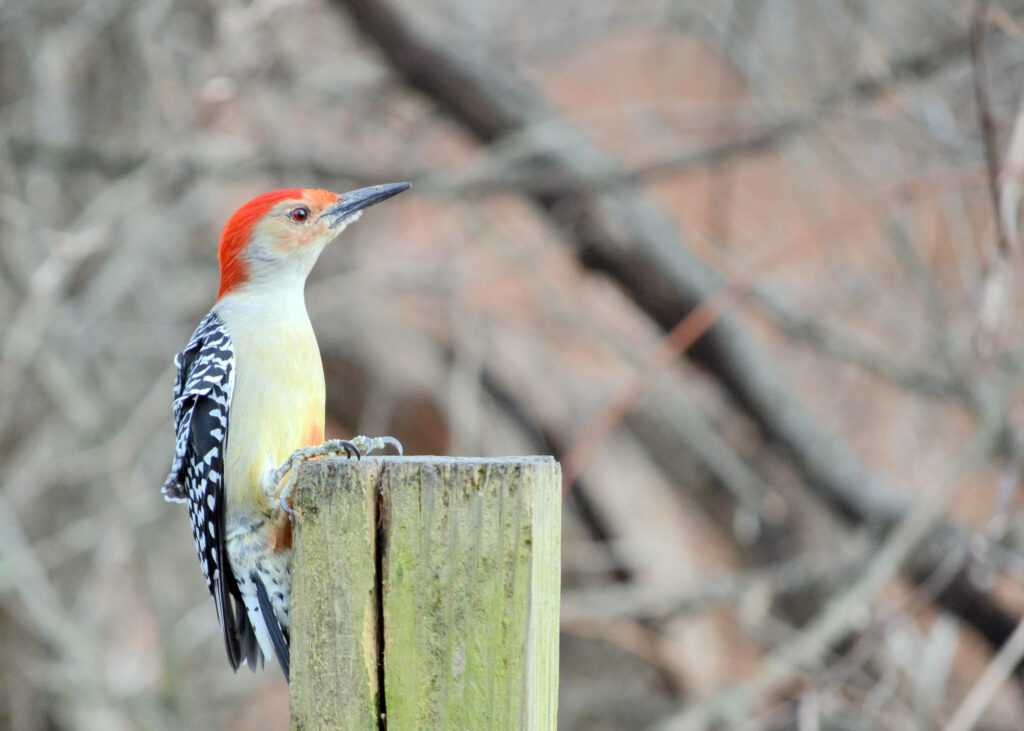
Size: About 8.5 to 10 inches in length
Identifying markings: Identifying features include a striped and mottled black and white body and a pale chest. They have a somewhat crimson abdomen, which gives them their names, but it’s difficult to tell until they’re in the correct posture!
Males have a dark crimson hood that reaches out from the beak near the throat, while females only have it at the back of the neck.
Diet: Consists of seeds, insects, and fruits.
Habitat: Open forests, shade trees, orchards, farmlands, and parks are suitable habitats. It thrives in the suburbs and favors deciduous trees.
Location: The eastern portion of the United States and southern New England.
Nesting: About 3 to 8 eggs are placed in a hollow of a dead trunk, tree limb, or even utility pole.
Facts About Red-Bellied Woodpeckers
Their tongue can extend roughly two inches past the top of their beak! It is lengthy and pointed, with a strong barb at the end that may be used to take down beetles and grasshoppers. They have also been observed to penetrate oranges and lap out the pulp with their tongue.
During the wintertime, Red-bellied Woodpeckers may frequently visit bird feeders collecting seeds and suet.
4. Red-Cockaded Woodpecker

Size: About 8 to 8.5 inches long
Identifying markings: Characteristics include a vividly striped white and black coat, a prominent white face, and a barred back. Males have a tiny red patch on their heads.
Diet: Insects that eat wood
Habitat: Open pine woods are the habitat.
Location: The southeastern United States.
Nesting: About 2 to 5 eggs are laid in the decaying heartwood of a live pine. Breeds in scattered groups in lofty pine trees, with nest holes that can be utilized for several years.
Facts About The Red-Cockaded Woodpecker
This uncommon and sadly disappearing woodpecker is only found mainly in pine forests. These unusual woodpeckers search for pine trees with red-heart disease and fungi that damage the heartwood, making the wood simpler to peel and build their intricate nesting holes.
The red heart is a very frequent disease of pines 70 years and older, however, most pine woods are chopped down when trees hit old age. The wide pine woods are disappearing.
Today, it is thought that there are only 4 Red-cockaded woodpecker breeding groupings on the planet, all of which are found inside the southeastern United States.
Since 1973, they have indeed been categorized as critically endangered.
5. Flickers

Size: About 10 to 14 inches in length
Identifying markings: Tanish-brown with black striping on that shoulder, black dots on the abdomen, and a huge black crescent-shaped pattern on the chest.
Based on the subspecies, the underside of the wings is red or yellow. (South and west are red, whereas north and east are yellow) Males get a mustache (red or black based on the species), whereas females do not.
Diet: Ants, as well as other seeds, nuts, fruit, and insects, make up their diet.
Habitat: Forests, suburbia, and deserts.
Location: Northern Flicker is found throughout the United States, parts of Mexico, and Canada. The Gilded Flicker may be found in northern Mexico, southern Arizona, and Nevada.
Nesting: In arid settings, About 3 to 14 eggs are placed in a hollow in a tree or cactus.
Facts About Flickers
Flickers are classified into three subspecies. Northern Flickers are classified as “yellow-shafted” and “red-shafted.” The yellow-shafted is located in the east, whereas the red-shafted is located in the west. Also, there is the Gilded Flicker, which dwells mostly in gigantic cactus jungles in the southern United States and Mexico.
Northern Flickers are among the few migratory woodpeckers in North America. In the wintertime, birds within the northern sections of their habitat will migrate south. Another fascinating truth about Flickers is that they frequently focus on finding food on the ground.
Flickers adore ants and will burrow in the ground to locate them before consuming them with their extended tongue.
In addition, they are said to swallow more ants compared to other North American birds!
6. Sapsuckers

Size: About 8 to 9 inches in length
Diet: Sap, berries, and insects make up their diet.
Habitat: Woodlands and forests
Nesting: occurs when 4 to 7 eggs are hatched in living tree holes. They favor Aspen trees.
Identifying Markings
Yellow-bellied: White and black on top, with a white wing spot. Males have a red neck and crown, while females have a white neck.
Red-naped: A prominent white stripe on the wing distinguishes that from other woodpeckers. It is distinguished from the red-breasted sapsucker by its bold white, black, and red facial appearance and mottled white skin on the back.
Red-breasted: The forehead and chest are mostly red, with a prominent white stripe on the shoulders. The back seems to be mostly black with several white markings.
Williamson’s: Male Williamson’s has a huge white wing spot, two white bands on the cheek, a red neck, and a yellow abdomen. Females have brown heads, white and black barred bodies and wings, and a yellow abdomen.
Location
Yellow-bellied: Almost all of Mexico, Canada, and the eastern part of the United States.
Red-naped: From southern British Columbia through the western United States (with the exception of the coast) and down towards Mexico.
Red-breasted: Canada’s as well as the United States’ farthest western coasts.
Williamson’s: South towards Mexico along the Mountain region.
Facts about Sapsuckers
In North America, there are four kinds of sapsuckers: Yellow-bellied (mainly eastern), Red-breasted (west coast exclusively), Red-naped (primarily western), and Williamson’s (along the Rocky Mountains).
They need not “suck” sap; instead, they consume it with little hair-like bristles protruding from their mouth. They dig lines of evenly spaced vertical and lateral pores in a tree’s stem. They would suck the sap that drips out.
The sap may also entice insects that might become entangled in it and remain paralyzed, allowing woodpeckers to consume them readily.
7. Downy Woodpecker

Size: The tiniest among all the North American woodpeckers, about 6 to 7 inches in length.
Identifying markings: Identifying features include a short beak, white and black top parts with a wide white vertical band along the back, a black and white striped face, and a pure white belly. Males get a red patch on their necks.
Diet: Consists of wood-boring seeds, insects, and fruit.
Habitat: Open forests, parks, and orchards are suitable habitats.
Location: Throughout the bulk of Canada and the United States.
Nesting: About 3 to 7 eggs are hatched in a hole or maybe even a birdhouse.
Facts About The Downy Woodpeckers
Downy woodpeckers may be located over most of the country and regularly visit bird feeders eating suet and seeds. They have always been among the first species to appear whenever I relocate and set up my feeders.
They are also frequently observed consuming hummingbird nectar from hummingbird feeders.
Downy Woodpeckers, like some other woodpeckers, bore into trunks but prefer to gather larvae and insects from bark cracks.
8. Hairy Woodpecker
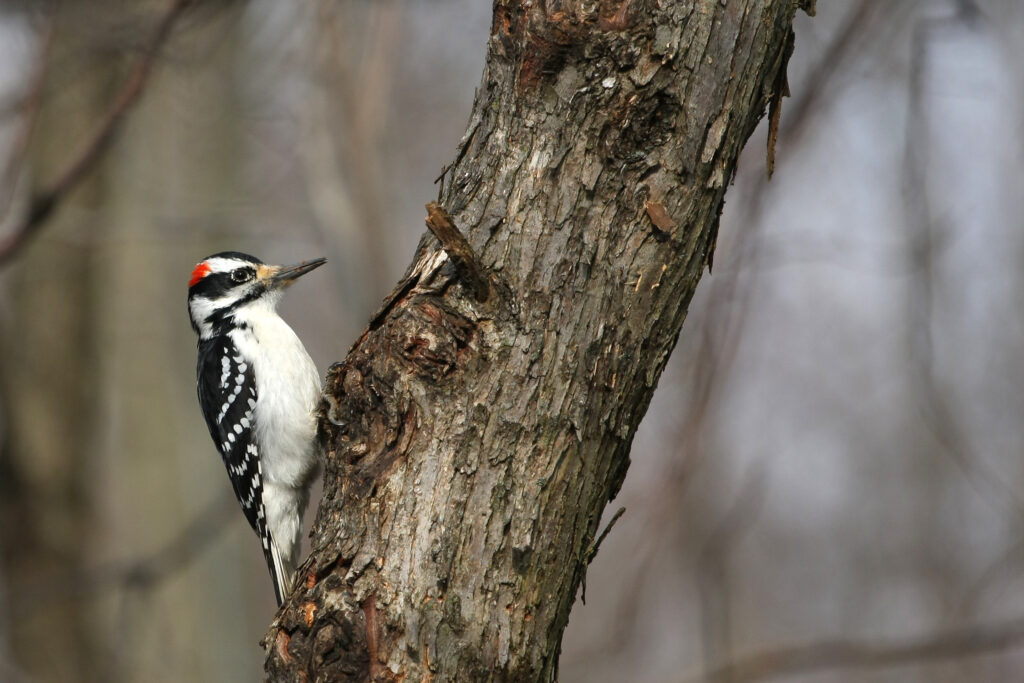
Size: 8.5 to 10 inches in length
Identifying markings: Identifying characteristics include a black wingspan featuring white dots, a white stripe down to the back, and an all-white abdomen. Males get a crimson spot on the back of their neck.
Diet: Wood-boring insects, seeds, and berries are among its favorite foods.
Habitat: Orchards, mature woods, and parks are suitable habitats.
Location: Throughout the bulk of Canada and the United States, as well as a portion of Mexico.
Nesting: 3 to 6 eggs are laid on a layer of wood pellets in a tree hollow.
Facts about the Hairy Woodpeckers
Hairy woodpeckers resemble the tiny Downy woodpecker. They may be identified by their bigger overall size as well as their notably longer bill.
It has been observed that they would occasionally accompany Pileated Woodpeckers, having to wait for them all to complete drilling holes, and then explore and hunt for bugs that the Pileated might have missed.
Conclusion
All woodpeckers perform crucial functions in our environment, reducing insect populations and offering nesting sites for migrating birds that can’t dig for themselves.
North America is fortunate to still retain many distinct species of this bird, so whether you’re a local or simply passing through, keep an eye out for one of the above-mentioned woodpeckers.
FAQ
What would be North America's most frequent woodpecker?
The White-headed Woodpecker is found to be the most frequent woodpecker in North America. They can be found in hilly pine woods across the West.
Last Updated on March 22, 2023 by Lily Aldrin
